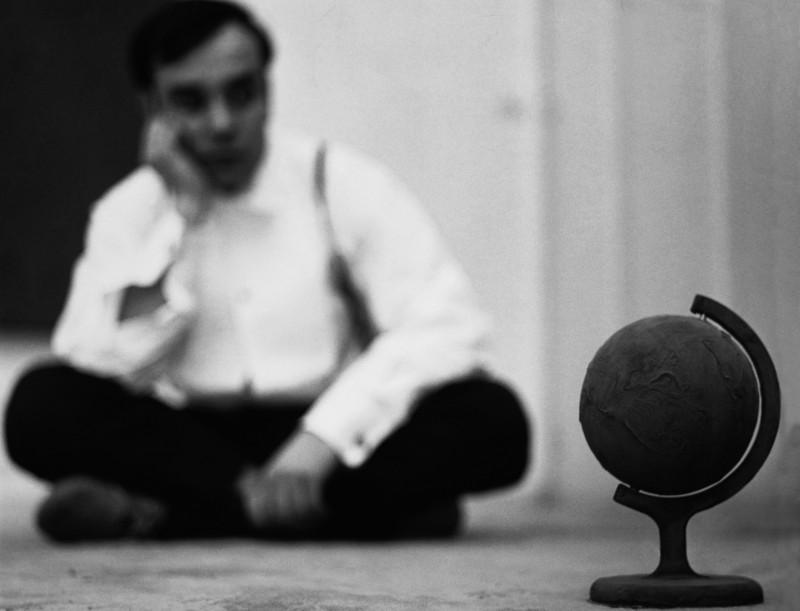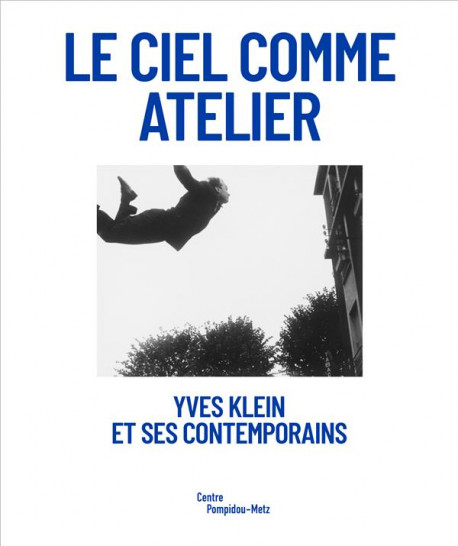"If Klein's work, short and intense, still resonates with such force today, it is because, contrary to popular belief, it does not boil down to an individual journey, a metaphysical quest at the limits of pictoriality. Klein, at the crossroads of groups of artists attempting to regenerate an artistic practice devastated by the questions opened up by the Second World War, seems to propose very diverse fields of research and postulates within the unity of his work. The global vision that underpins his approach gives all the stages of his quest the force of universality and anticipation.
Restany's proposal for space air-conditioning, which would free up the Earth's surface by bringing all the infrastructure underground, dates from 1951. The terrestrial globe, thus energised from within, resembles a spaceship launched into cosmic space. ‘The technical and scientific conclusion of our civilisation is buried in the bowels of the Earth’, Klein even said in a lecture given at the Sorbonne in 1959. The conditioning of large geographical areas by elementary energies - water, air, fire - used in synthesis or by opposing effects, makes it possible to influence fundamental climatic phenomena (wind regimes, marine currents). It provides a system of urban integration (fountains, curtains of smoke, clouds of coloured steam) and individual spatial conditioning through the treatment of pulsed air (Lit d'air).
The immateriality of painting, the affirmation of a realm of sensibility centred on the body, the constant recourse to primary elements, the definition of an impersonal ontology - all these precepts seem to displace the problematics of the groups of artists Klein confronts. In place of the elementary human figure, he substituted an intensive body, always in action in the extension of a domain of sensibility. He opposed painting and sculpture with a generic immateriality that ended up manifesting itself only through flows of energy, raging fire, pulsating air and splashing water. Instead of an architectural utopia, he substitutes a strategy of the device, in which the purpose of building leads to the erasure and disappearance of the building. The air conditioning of space imposes a radical urban domain, without exteriority, based on the unlimited control of source energies. It is invented as an achievement in which space escapes measurement and the games of separation (walls, buildings).
The ambiente, a recurrent concept in Italian culture, seems to have found its fulfilment, with space becoming climate, a continuous environment that allows personal intimacy to disappear, opening the way to a new societal mode. In this way, Klein precedes the proposals of Superstudio and Archizoom, and ultimately attempts, beyond the political, to raise a question of origin, a question of law, that of human settlement. The circle closes with the famous drawing on the Architecture of Air (see p. 133). The ‘Anthropometries’ are replaced by these blue silhouettes floating in space. They are but traces, imprints, and the spectre of Hiroshima reappears, inverted, reinvested with a new meaning. The tortured figures of Arte Nucleare, Baj, Colombo, Jean Dubuffet, Jorn and Paolozzi emerge transfigured, ennobled by this transformation of pictorial matter into pure energy, pure tension of sensibility."
excerpt from the ‘Architectures du corps intensif’, by Frédéric Migayrou, catalogue for the exhibition ‘Le ciel comme atelier - Yves Klein et ses contemporains’ presented at the Centre Pompidou Metz in 2020.

